#bhuta kola
Explore tagged Tumblr posts
Text
Theyyam: The Dance of Divinity
Context: Theyyam dance is performed annually during the Malayalam months of Thulam (Mid-October-mid-November). About Theyyam Theyyam, also referred to as Kaliyattom, is a traditional folk-dance ritual that is practiced in northern Kerala and certain parts of Karnataka. A similar practice known as Bhuta Kola is followed in the Tulunadu region of neighbouring Karnataka. Over time, it has…

View On WordPress
0 notes
Text
Cue this music in the background on your choice -
Kantara Review and Analysis - A Video Essay
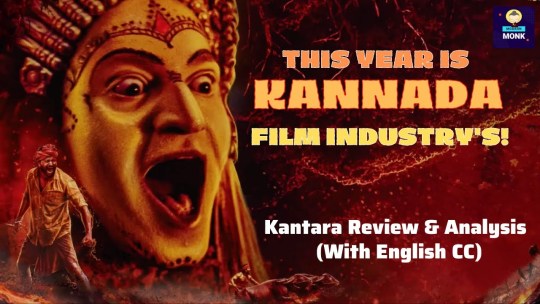
A small brief description about this movie:
Kantara is a Kannada-language film that focuses on a plot involving a conflict of land acquisition and the involvement of demigods to the story.
The film's highlight is how it represents the Tulu culture of celebrating the Bhuta Kola and its traditional dynamics around the film's plot.
Kantara made rounds around the Indian Cinema's space, and now it's being acknowledged around the world too by cinephiles.
Though Kantara have a predictable and common plot about the war between two groups of the same village and who wins the war, but -
The greatest strength of Kantara is the cinematic and thematic elements present in the whole film and how Rishab Shetty, the main lead along with the writer and director of Kantara, represents the Tulu culture of Bhuta Kola in the movie.
Here's my take on "What's the Value of Kantara" for so many people in India, especially the people who are accustomed to the ritual of Bhuta Kola in Karnataka and other areas.
This video gives a brief description of the Bhuta Kola, then went on to give review with how Rishab Shetty materialised this movie and provides an analysis on the story of Kantara, eventually summing up with a conclusion.
youtube
#movies#cinema#movie review#latest movie news#movie critic#kannada movies#kannada film#kannada film industry#kantara#rishab shetty#bhuta kola#tulu#Tulu Nadu#karnataka#indian mythology#india movie#kannada films#indian movies#sandalwood#Spotify#Youtube
10 notes
·
View notes
Text
Invoking Divine Spirits.
I gathered my excitement and was waiting anxiously for the moment to begin while the rest of the world appeared to be immersed in divinity. The eerie silence in the crowd made me nervous. But it was soon overtaken by thunderous actions of ‘Bhutas‘ who were dressed rightly to the occasion. They had a job to do, and it was to ‘Invoke divine spirits’to please God. This powerful, irresistible, and…
View On WordPress
1 note
·
View note
Text
Kantara Review: एक ऐसी फिल्म जो लंबे समय तक ज़हन में रहेगी
Kantara Review: एक ऐसी फिल्म जो लंबे समय तक ज़हन में रहेगी
Kantara Movie Review in Hindi: कन्नड़ फिल्म कांतारा ���ब हिंदी भाषा में भी रिलीज़ हो चुकी है, और जो भी इस फिल्म को देखकर आ रहा है, बस यही कह रहा है कि भाई फिल्में बनाने में अब साउथ का मुकाबला नहीं किया जा सकता. फिल्म में मुख्य किरदार में रिशभ शेट्टी हैं, उन्हीं ने फिल्म का निर्देशन किया है, स्क्रीनप्ले लिखा है और कोरियोग्राफ भी किया है। किरदारों का बेहतरीन अभिनय, आधुनिक बीट्स के साथ पारंपरिक कन्नड़…

View On WordPress
0 notes
Photo

Part of ritual worship at Bhuta kola, Karnataka
14 notes
·
View notes
Text
Culture!
When visiting a place it is common courtesy to know about their culture. This article deals exactly with that and briefly summarizes a few aspects of Mangalore’s culture. Read the below article to learn more
┈ ┈ ┈ ⋞ ⟨ ⏣ ⟩ ⋟ ┈ ┈ ┈
Many classical dance forms and folk art are practised in Mangalore. Yakshagana is a night-long dance and drama performance while Pilivesha, a folk dance unique to the city, is performed during Dasara and Krishna Janmashtami. Karadi Vesha is another well-known dance that is performed during Dasara.
Paddanas, ballad-like epics passed on verbally through generations, are sung by a community of impersonators in Tulu and are usually accompanied by the rhythmic drum beats. The Evkaristik Purshanv is an annual Catholic religious procession that is held on the first Sunday of each year. Kodial Theru, also known as Mangaluru Rathotsava is unique to the Goud Saraswat Brahmin community and is celebrated at the city's Sri Venkatramana Temple.
The Mangalore Catholic community's unique festivals include Monti Fest, which celebrates the Nativity feast and the blessing of new harvests. The Jain Milan, a committee that consists of Jain families, organises the annual Jain food festival, while Mosaru Kudike, which is part of Krishna Janmashtami festival is celebrated by the whole community. Special night prayers called Taraveeh are offered in mosques during the month of Ramadan.
Aati, a festival worshiping Kalenja, a patron spirit of the city, is during the Aashaadha month of Hindu calendar. Festivals such as Karavali Utsav and Kudlotsava are celebrated with national and state-level performances in dance, drama and music. Bhuta Kola is usually performed by the Tuluva community at night. Bhuta Kola is similar to Theyyam in Kerala. Nagaradhane is performed in praise of Naga Devatha, who is said to be the protector of all snakes. Kori Katta, an ancient ritual associated with the Hindu temples in rural areas, a religious and spiritual cockfight, is held at the temples when permission is given by police.
And that was the end of the Culture section! Did you take down a few notes? Have any more events you feel should be added to this list? Let me know down in the notes. Make sure to like and reblog this post as it helps out a ton!
2 notes
·
View notes
Video
Kantara dance with music | Bhuta Kola, Dance of Karnataka | Bhootha Arad...#yakshagana, #tulunad, #udupi, #mangalore, #tulunada, #tulunadu, #nammakudla, #kudla, #daivaradhane, kantara music, What is Bhoota Kola, Tulu tradition Kannada movie, #kola, #yakshaganartist, #nammaudupi, #isiri, #yaksha, #yakshaganamgelge, #yakshaganaphotography, #nammatulunad, Karnataka tribal dancers, Kantara #karnataka, #koragajja, #gaggara, #kale, #kambala, #photography, #yakshaganalove, #daiva, #instagram, #beautyoftulunad, #karkala, #mangalorediaries,
#youtube#yakshagana tulunad udupi mangalore tulunada tulunadu nammakudla kudla daivaradhane kantara music What is Bhoota Kola Tulu tradition Kannada
0 notes
Text
South India
South India (comprised of Kerala, Karnataka, Andhra Pradesh, Telangana and Tamil Nadu) really has a distinct culture that sets it apart from the rest of the country. Intricate temple architecture, historical ruins, palm fringed canals, spirituality and beach will provide you with a varied and interesting trip. Southern Part of India has witnessed many Dynasties and thus represents different Cultures. It is still untouched, green and pure. Traditional clothing: South Indian women traditionally wear the sari while the men wear a type of sarong, which could be either a white dhoti or a colourful lungi with typical batik patterns.
Cuisine:
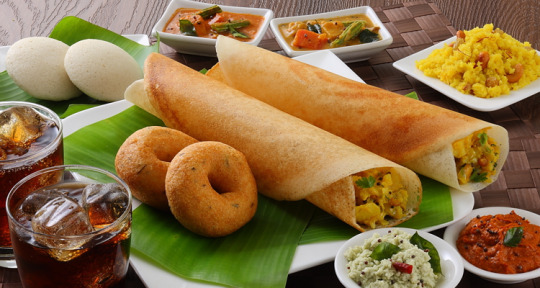
Rice is the staple diet, with fish being an integral component of coastal South Indian meals. Coconut is an important ingredient in Kerala or Hyderabadi biryani is also very special in Telangana. In Andhra Pradesh is characterized by the pickles, spicy aromatic curries and the generous use of chili powder. Dosa, Idli, Uttapam etc. are popular throughout the region. Coastal areas like the state of Kerala and the city of Mangalore are known for their seafood. South Indian coffee is generally quite robust, and coffee is a preferred drink throughout the Malabar region. Tamil Nadu is well known for its Idli, Dosa, Pongal, Sambhar, Vada, Puri, which are the common breakfast in Tamil families. Among the Malayalees, Appam, Puttu, Upamav, Malabar biryani are some of the common dishes. In Karnataka, Bisibele bath, Kara bath, Kesari bath, Raggi mudda, Udin Vada, Bene Masala Dosa, Paper Dosa are some of the common dishes.
Music:
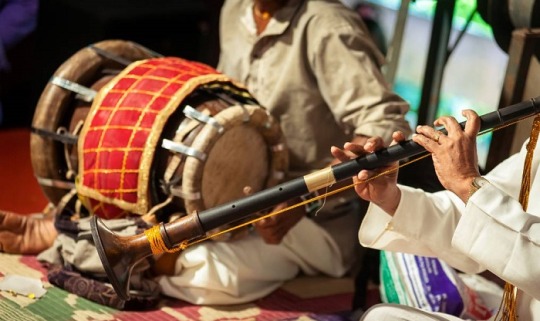
Rural folk music to the sophisticated Indian Classical Music of South India is known as Carnatic music and mostly devotional, rhythmic and structured music by composers such as Purandara Dasa, Kanaka Dasaru, Tyagaraja, Dikshathar, Shyama Sasthri, and Swati Tirunal. The nadaswaram and the (thavil) were played together in South Indian temples to create a periya melam ensemble.
Dance :
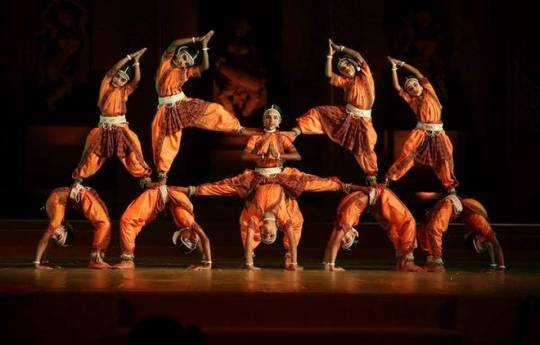
The South Indian culture is celebrated in the elaborate dance forms of South India Koodiyattam, Bharatanatyam, Oyilattam, Karakattam, Kuchipudi, Kathakali, Thirayattam, They yam, Bhuta Kola, Ottamthullal, Oppana, Kerala Natanam, Mohiniaattam and Yakshagana. The Bharatanatyam is the celebration of the eternal universe through the celebration of the beauty of the body.
Kerala Backwaters:
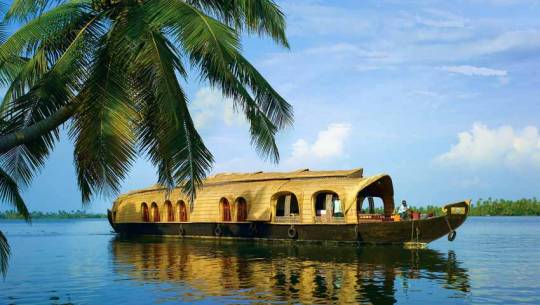
Cruising along the palm-fringed canals, known as the backwaters, is one of the best things to do in Kerala. Indian food cooked by a chef and chilled beer on-board the boat makes it even more enjoyable. You can spend the night on the boat, out in the middle of the water, surrounded by serenity. Kerala backwaters are a network of brackish lagoons and lakes lying parallel to the Arabian Sea coast of Kerala state in southern India, as well as interconnected canals, rivers, and inlets, a labyrinthine system formed by more than 900 kilometres (560 mi) of waterways.
Madurai, Tamil Nadu:
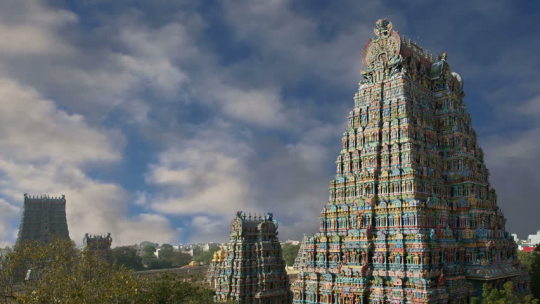
Ancient Madurai is home to the most impressive and important temple in South India, The city of Madurai is more than 4,000 years old, and has remained a major center for Tamil culture and learning. Its skyline is dominated by the 14 colorful gopurams (gateway towers) of Meenakshi Amman Temple. Covered in bright carvings of Hindu gods, the Dravidian-style temple is a major pilgrimage site.
Mysore, Karnataka:
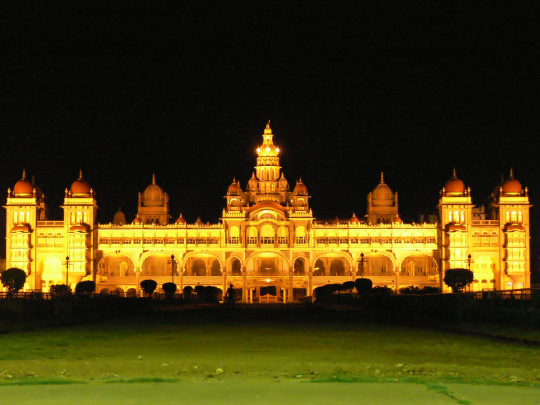
Mysore (or Mysuru), a city in India's south-western Karnataka state, was the capital of the Kingdom of Mysore from 1399 to 1947. Mysore has an impressive royal heritage, with the city's main tourist attraction being the imposing Mysore Palace. The palace blends Hindu, Islamic, Gothic and Rajput styles. Mysore is also home to the centuries-old Devaraja Market, filled with spices, silk and sandalwood. Mysore is located in the foothills of the Chamundi Hills about 145.2 km (90 mi) towards the southwest of Bangalore and spread across an area of 152 km2 (59 sq. mi).
Rameshwaram and Dhanushkodi, Tamil Nadu:
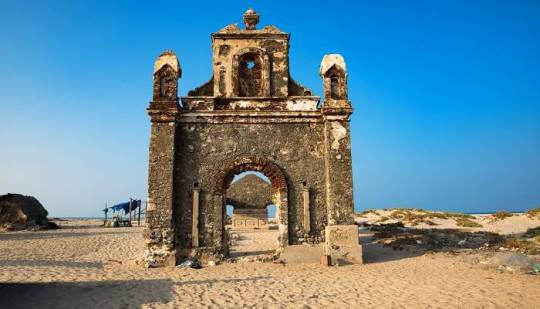
Rameshwaram is a peaceful little pilgrim town in southern Tamil Nadu, brought to life by the constant stream of pious devotees that come to bathe in its holy water, get a puja done to purify their karma, and visit Ramanathaswamy Temple. This is where Lord Ram got Lord Hanuman to build a bridge across the ocean to rescue Sita from her abductor, Ravan. Adam's Bridge (also referred to as Ram Setu), a chain of reefs and sandbanks, is said to be the place where the bridge was located. It's about as remote as you can get, and almost connects India with Sri Lanka. In this area, not far from Rameshwaram, are the eerily crumbled and windswept remnants of Dhanuskodi, a town destroyed by cyclone in 1964. The approach to Rameshwaram is dramatic, with two long bridges (one for trains and one for other vehicles) linking it to the mainland. Periyar National Park, Kerala:
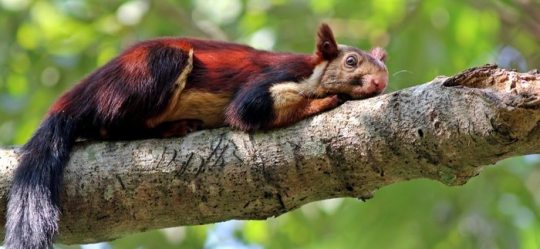
Periyar National Park, also known as Periyar Tiger Reserve, is in the mountainous Western Ghats of Kerala, southern India. Periyar is known for its herds of wild elephants. They can be sometimes be seen by the side of the lake on boat safari. This wildlife sanctuary is home to tigers and a significant elephant population, as well as rare lion-tailed macaques, sambar deer, leopards and Indian bison.
Gokarna, Karnataka:
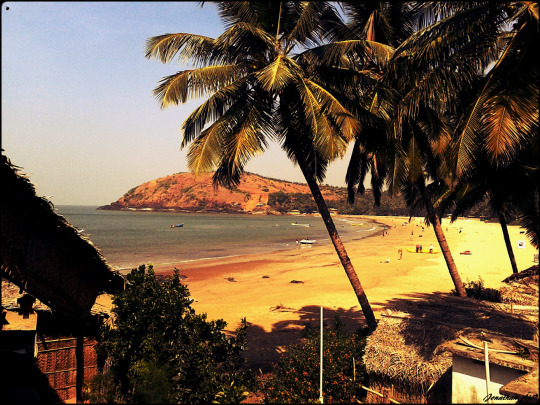
Gokarna is a town on the Arabian Sea, in the south-western Indian state of Karnataka. This small and remote holy town has four of India's most secluded and pristine beaches (Kudle Beach, Om Beach, Half-moon Beach, and Paradise Beach) nestled nearby. Each has its own appeal. The town is also home to beaches such as palm-lined Gokarna, in the center, plus Kudle and Om farther south.
South India Famous Culture
South India (contained Kerala, Karnataka, Andhra Pradesh, Telangana and Tamil Nadu) truly has a particular culture that separates it from the remainder of the nation. Perplexing sanctuary engineering, verifiable remnants, palm bordered channels, otherworldliness and shoreline will give you a changed and fascinating excursion. Southern Part of India has seen numerous Dynasties and in this way speaks to various Cultures. It is as yet immaculate, green and unadulterated. Traditional clothing: South Indian ladies generally wear the sari while the men wear a sort of sarong, which could be either a white dhoti or a brilliant lungi with common batik designs. Cooking: Rice is the staple eating routine, with fish being a fundamental segment of waterfront South Indian suppers. Coconut is a significant fixing in Kerala or Hyderabadi biryani is additionally exceptionally unique in Telangana. In Andhra Pradesh is portrayed by the pickles, fiery fragrant curries and the liberal utilization of stew powder. Dosa, Idli, Uttapam and so forth are famous all through the area. Beach front regions like the territory of Kerala and the city of Mangalore are known for their fish. South Indian espresso is commonly very powerful, and espresso is a favoured beverage all through the Malabar locale. Tamil Nadu is notable for its Idli, Dosa, Pongal, Sambhar, Vada, and Puri, which are the regular breakfast in Tamil families. Among the Malayalees, Appam, Puttu, Upamav, Malabar biriyani are a portion of the basic dishes. In Karnataka, Bisibele shower, Kara shower, Kesari shower, Raggi mudda, Udin Vada, Bene Masala Dosa, Paper Dosa are a portion of the normal dishes. Music: Country people music to the modern Indian Classical Music of South India is known as Carnatic music and generally reverential, cadenced and organized music by arrangers, for example, Purandara Dasa, Kanaka Dasaru, Tyagaraja, Dikshathar, Shyama Sasthri, and Swati Tirunal. The nadaswaram and the (thavil) were played together in South Indian sanctuaries to make a periya melam group. Dance: The South Indian culture is praised in the intricate move types of South India Koodiyattam, Bharatanatyam, Oyilattam, Karakattam, Kuchipudi, Kathakali, Thirayattam, Theyyam, Bhuta Kola, Ottamthullal, Oppana, Kerala Natanam, Mohiniaattam and Yakshagana. The Bharatanatyam is the festival of the everlasting universe through the festival of the magnificence of the body. Kerala Backwaters: Cruising along the palm-bordered trenches, known as the backwaters, is a standout amongst the best activities in Kerala. Indian sustenance cooked by a culinary specialist and chilled brew on-board the pontoon make it much progressively pleasant. You can go through the night on the pontoon, out amidst the water, encompassed by peacefulness. Kerala backwaters are a system of salty tidal ponds and lakes lying parallel to the Arabian Sea shore of Kerala state in southern India, just as interconnected trenches, streams, and bays, an overly complex framework shaped by in excess of 900 kilometres (560 mi) of conduits. Madurai, Tamil Nadu: Ancient Madurai is home to the most amazing and significant sanctuary in South India, The city of Madurai is over 4,000 years of age, and has remained a noteworthy place for Tamil culture and learning. Its horizon is ruled by the 14 bright gopurams (passage towers) of Meenakshi Amman Temple. Shrouded in brilliant carvings of Hindu divine beings, the Dravidian-style sanctuary is a noteworthy journey site. Mysore, Karnataka: Mysore (or Mysuru), a city in India's south-western Karnataka state, was the capital of the Kingdom of Mysore from 1399 to 1947. Mysore has a great imperial legacy, with the city's principle vacation spot being the overwhelming Mysore Palace. The royal residence mixes Hindu, Islamic, Gothic and Rajput styles. Mysore is likewise home to the hundreds of years old Devaraja Market, loaded up with flavors, silk and sandalwood. Mysore is situated in the lower regions of the Chamundi Hills about 145.2 km (90 mi) towards the southwest of Bangalore and spread over a zone of 152 km2 (59 sq. mi). Rameshwaram and Dhanushkodi, Tamil Nadu: Rameshwaram is a serene little explorer town in southern Tamil Nadu, enlivened by the consistent stream of devout enthusiasts that come to wash in its blessed water, complete a puja to clean their karma, and visit Ramanathaswamy Temple. This is the place Lord Ram got Lord Hanuman to manufacture a scaffold over the sea to protect Sita from her abductor, Ravan. Adam's Bridge (additionally alluded to as Ram Setu), a chain of reefs and sandbanks, is said to be where the extension was found. It's about as remote as you can get, and nearly interfaces India with Sri Lanka. Here, not a long way from Rameshwaram, are the frightfully disintegrated and desolate remainders of Dhanuskodi, a town pulverized by typhoon in 1964. The way to deal with Rameshwaram is emotional, with two long extensions (one for trains and one for different vehicles) connecting it to the terrain. Periyar National Park, Kerala: Periyar National Park, otherwise called Periyar Tiger Reserve, is in the rocky Western Ghats of Kerala, southern India. Periyar is known for its crowds of wild elephants. They can be some of the time be seen by the side of the lake on pontoon safari. This untamed life haven is home to tigers and a noteworthy elephant populace, just as uncommon lion-followed macaques, sambar deer, panthers and Indian buffalo. Gokarna, Karnataka: Gokarna is a town on the Arabian Sea, in the south-western Indian province of Karnataka. This little and remote heavenly town has four of India's most detached and immaculate shorelines (Kudle Beach, Om Beach, Half-moon Beach, and Paradise Beach) settled adjacent. Every ha its own allure. The town is likewise home to shorelines, for example, palm-lined Gokarna, in the inside, in addition to Kudle and Om more distant south.
Getting an E-visa for your expedition to India is now quick and easy. Indian visa can be applied for the same.
About the author.
The author has worked with clients for her passion of article writing for over four years. Her educational background in engineering sciences and professional development has given her a broad base from which she can approach and write on many topics with vast knowledge. Her writing skills have been appreciated, encouraged and enhanced by many.
0 notes
Photo

Regram via @sanjith_shetty 🔥🔥🔥 Bootha Kola or Kola Aata also known as the worship of Daivas or Bhootas or Demi-Gods, is an ancient ritual prevalent among the Tulu speaking community in the Dakshina Kannada districts in Karnataka and in kasargod taluk of kerala,which is collectively referred to as Tulu Nadu. While in Kerala is celebrated as Theyyam. This tradition dates back to 700-800 BC coinciding with the immigration of the Early Tulu tribes who introduced the initial cults of Bermer and Panjurli. Bhuta Kola in Mangalore is a form of spirit dance that is performed by the people of Mangalore. #bhootakola #tulunadu #fire #nema #ritual #performance #travel #explore #forest #winter #mangalore #vsco #canon5dmarkiii @RepostIt_app
#canon5dmarkiii#explore#forest#ritual#tulunadu#travel#performance#mangalore#bhootakola#fire#nema#winter#vsco
0 notes
Photo

Theyyam (#Teyyam,Theyam, Theyyattam ) is a popular ritual form of worship of North Malabar in Kerala, India, predominant in the Kolathunadu area (consisting of present-day Kasargod, Kannur Districts, Mananthavady Taluk of Wayanad and Vatakara and Koyilandy Taluks of Kozhikode of Kerala) and also in South Canara and Kodagu of Karnataka as a living cult with several thousand-year-old traditions, rituals and customs. The performers of Theyyam belong to the lower caste community, and have an important position in Theyyam.People of these districts consider Theyyam itself as a God and they seek blessings from this Theyyam. A similar custom is followed in the Mangalore region of neighbouring Karnataka known as Bhuta Kola. #indiatravel #kerealatourism #kerala #kasargod #kannur #ernakulam #mangalore #karnataka #natgeo #natgeoindia #natgeoyourshot #natgeoyourshot #indiatravel #mobilephotography #photography (at Tripunithura, India)
#natgeoyourshot#natgeoindia#mobilephotography#kerala#kannur#natgeo#ernakulam#indiatravel#kasargod#mangalore#karnataka#kerealatourism#teyyam#photography
0 notes
Photo

Bhuta Sthana or Bhuta Gudi, a temple of Bhoota Kola, Karnataka
23 notes
·
View notes
Photo

Theyyam (#Teyyam,Theyam, Theyyattam ) is a popular ritual form of worship of North Malabar in Kerala, India, predominant in the Kolathunadu area (consisting of present-day Kasargod, Kannur Districts, Mananthavady Taluk of Wayanad and Vatakara and Koyilandy Taluks of Kozhikode of Kerala) and also in South Canara and Kodagu of Karnataka as a living cult with several thousand-year-old traditions, rituals and customs. The performers of Theyyam belong to the lower caste community, and have an important position in Theyyam.People of these districts consider Theyyam itself as a God and they seek blessings from this Theyyam. A similar custom is followed in the Mangalore region of neighbouring Karnataka known as Bhuta Kola. #indiatravel #kerealatourism #kerala #kasargod #kannur #ernakulam #mangalore #karnataka #natgeo #natgeoindia #natgeoyourshot #natgeoyourshot #indiatravel #mobilephotography #photography (at Tripunithura, India)
#kasargod#photography#natgeoyourshot#mangalore#kerealatourism#teyyam#natgeo#karnataka#indiatravel#ernakulam#kannur#mobilephotography#kerala#natgeoindia
0 notes